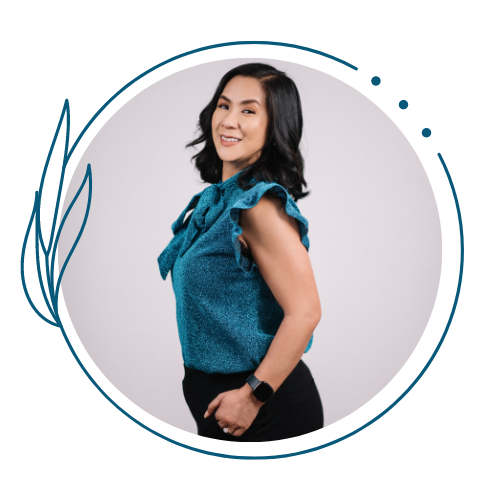What Your Children Learn Watching You Sacrifice (It’s Not What You Think)
One of my clients—we’ll call her Ana—came to me exhausted.
She’s a Filipino immigrant nurse, a mother of three, and, like so many women I’ve worked with, she wore her sacrifice like a badge of honor.
She had a full-time job at the hospital, picked up extra shifts “just in case,” kept the household running, and still made it to every family party with lumpia and pancit in hand. The word rest wasn’t even in her vocabulary.
“I’m just doing what I saw my mom do,” she told me. “She gave up everything for us. I want to show my kids the same love.”
But then she told me something that stopped both of us cold.
One morning, her eldest daughter had turned to her and said:
“Mom, are you happy?”
Not in a sarcastic, moody-teen kind of way. It was a genuine question. Her daughter had seen the bags under her eyes, the way she rushed out the door every morning, how she skipped meals and rarely laughed anymore.
Ana didn’t know how to answer.
Because the truth? She wasn’t.
She was proud, sure. Grateful for her job, her family, her home. But happy? That felt like a luxury she hadn’t thought about in years.
What We Think We’re Teaching
Many of us were raised in cultures where love and sacrifice are interchangeable. Where saying yes to everyone else and no to yourself is not only normal—it’s expected.
We think our children will see all this hard work and learn resilience, grit, gratitude.
And yes—sometimes they do.
But sometimes, they learn something else.
They learn that adulthood equals burnout.
That loving others means abandoning yourself.
That self-worth is measured by how much you give up.
That joy is earned after everyone else is okay.
Ana realized she wasn’t just modeling love.
She was unintentionally modeling self-neglect.
What Kids Actually Notice
Here’s what’s wild: kids notice everything. Not just what you say, but how you live.
When Ana never took a break, her daughter learned that rest wasn’t allowed.
When Ana pushed through pain instead of asking for help, her kids learned that struggle is the norm.
When Ana skipped meals but made sure everyone else was fed, they learned that moms come last.
But when she started to shift—even in small ways—her kids noticed that, too.
She started taking a walk by herself on Sunday mornings.
She paused before saying yes to every family obligation.
She even (gasp!) left a shift early once to get a massage.
And one night, as she lay on the couch watching a movie with her kids, her youngest curled up next to her and said, “Mom, I love when you’re like this.”
Present. Rested. Laughing.
Her kids didn’t want more of her.
They wanted the real her.
The Legacy You’re Actually Leaving
Sacrifice is deeply woven into the Filipino immigrant story. It’s a beautiful thread—but it’s not the whole fabric.
The legacy you leave your children isn’t just about how much you worked or gave. It’s also about what you modeled.
Did you show them how to say no with love?
Did you show them what boundaries look like?
Did you show them that joy isn’t selfish—that it’s sacred?
Because here’s the thing: our children don’t just become who we tell them to be.
They become who they watch us being.
Ana is still a loving, hardworking mom. But now she’s also showing her kids what it looks like to honor herself in the process. To live a life that includes everyone—but doesn’t forget her.
And that?
That’s the kind of legacy that changes generations.
Sign up for my free newsletter, usually sent once a month (and sometimes more often when inspiration strikes!). These are letters from my heart, filled with insights from my personal journey and client work, honest talk about life, and practical tools for managing self-doubt, tapping into inner wisdom, and embracing personal growth.
If you're seeking greater empowerment, satisfaction, and self-confidence, my newsletter will offer a steady source of inspiration, encouragement, and support







